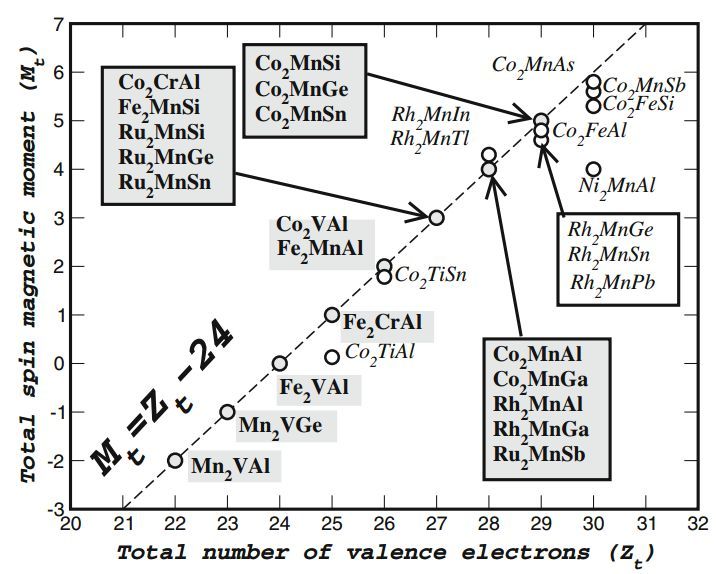mollwollfumble said:
List of Heusler alloys from Wikipedia.
Cu2MnAl, Cu2MnIn, Cu2MnSn
Ni2MnAl, Ni2MnIn, Ni2MnSn, Ni2MnSb, Ni2MnGa
Co2MnAl, Co2MnSi, Co2MnGa, Co2MnGe, Co2NiGa
Pd2MnAl, Pd2MnIn, Pd2MnSn, Pd2MnSb
Co2FeSi, Co2FeAl
Fe2VAl
Mn2VGa, Co2FeGe
New ones Co2MnTi ferromagnetic
And Mn2PtPd antiferromagnetic.
Heusler Alloys from http://www.springer.com/cda/content/document/cda_downloaddocument/9783319214481-c1.pdf

With all these (28 if I’ve counted correctly) Heusler Alloys already discovered, I’m at a bit of a loss to understand why finding two more is so exciting. Although I do understand the difficulties inherent in reducing the number of possibilities using just computer programming.
> it took years of work to synthesize our predictions
Isn’t it just a case of mixing liquid elements in the correct proportion and cooling it slowly?
> By calculating how the atoms would likely interact and the energy each structure would require, the list dwindled to 35,602 potentially stable compounds.
That wouldn’t be too difficult, given the line M = Z – 24 in the chart above.
> By checking each compound against other atomic arrangements and throwing out those that would be beat out by their competition, the list shrank to 248.
That would be tougher, I think. But not sure. Easy enough if limited to body-centred cubic, but taking triclinic into account and phases with the same elements in different numerical ratios ..
> only 22 materials showed a calculated magnetic moment. The final cut dropped any materials with competing alternative structures too close for comfort, leaving a final 14 candidates to bring from theoretical model into the real world.
But wouldn’t you have already eliminated non-magnetic materials in step 1?
At what stage were the 28 (or more) already tried eliminated?
> The first newly minted magnetic material was made of cobalt, manganese and titanium (Co2MnTi). The Curie temperature turned out to be 938 K — exceptionally high. This, along with its lack of rare earth elements, makes it potentially useful in many commercial applications.
There are others without rare earth components, such as Co2MnSi, Co2MnSb and Co2CrAl.
High Curie temperature, yes, but not startlingly so. Magnetitie has a Curie temperature of 948 K. Alnico magnets and pure iron and cobalt have higher Curie temperatures.
